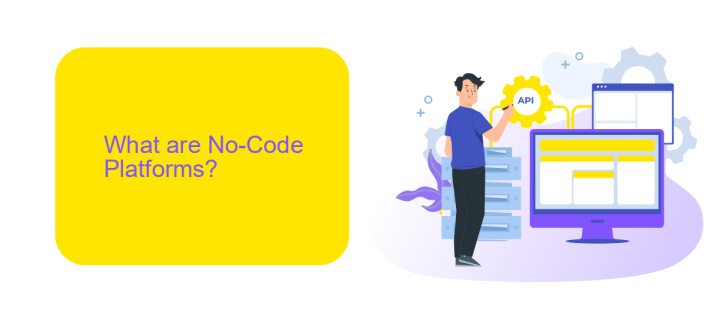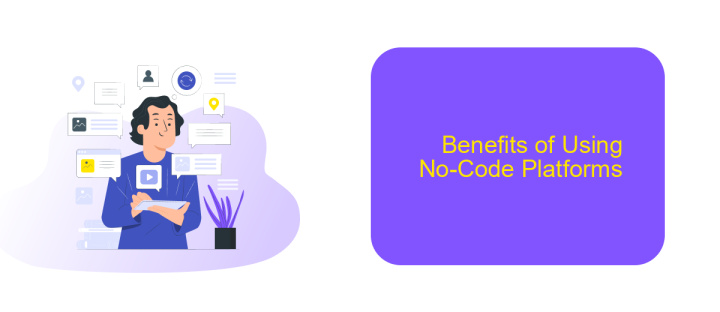No-Code Platforms
No-code platforms are revolutionizing the way businesses and individuals develop software by eliminating the need for traditional coding skills. These intuitive tools empower users to create applications, automate workflows, and build websites through visual interfaces and drag-and-drop functionalities. As technology continues to evolve, no-code platforms are becoming increasingly essential for rapid development and innovation across various industries.
Introduction
No-code platforms are revolutionizing the way businesses and individuals develop software applications. These platforms enable users to create, modify, and deploy applications without writing a single line of code. This democratization of software development opens up opportunities for those without technical backgrounds to bring their ideas to life.
- Ease of use: Intuitive drag-and-drop interfaces.
- Cost-effective: Reduced need for expensive development teams.
- Speed: Rapid prototyping and deployment.
- Flexibility: Easily customizable to meet specific needs.
- Integration: Seamless connectivity with other tools and services.
One of the significant advantages of no-code platforms is their ability to integrate with various services effortlessly. Tools like ApiX-Drive facilitate these integrations, allowing users to connect different applications and automate workflows efficiently. By leveraging such services, businesses can streamline operations and enhance productivity without the need for extensive coding knowledge.
What are No-Code Platforms?

No-code platforms are tools that allow users to create software applications without needing to write code. These platforms provide a visual interface where users can drag and drop elements to build applications, making software development accessible to those without technical expertise. By utilizing pre-built templates and components, users can quickly develop functional applications tailored to their specific needs, significantly reducing development time and costs.
One of the key advantages of no-code platforms is their ability to integrate with various services and APIs seamlessly. For instance, ApiX-Drive is a service that helps users set up integrations between different applications without any coding. This enables businesses to automate workflows and synchronize data across multiple platforms effortlessly. With no-code platforms and integration services like ApiX-Drive, organizations can streamline operations, improve efficiency, and focus on innovation rather than getting bogged down by technical complexities.
Types of No-Code Platforms

No-code platforms have revolutionized the way businesses develop applications and automate processes without extensive programming knowledge. These platforms can be broadly categorized into several types, each catering to different needs and use cases.
- Website Builders: Tools like Wix and Squarespace allow users to create professional websites using drag-and-drop interfaces.
- App Builders: Platforms such as Adalo and Bubble enable the creation of mobile and web applications without coding.
- Automation Tools: Services like Zapier and ApiX-Drive help automate workflows by connecting different applications and services seamlessly.
- Database Management: Airtable and Knack offer no-code solutions for managing and visualizing data effectively.
- eCommerce Platforms: Shopify and BigCommerce provide tools for setting up and managing online stores without technical expertise.
Each type of no-code platform addresses specific needs, from building websites and apps to automating workflows and managing data. For instance, ApiX-Drive stands out in the automation category by offering robust integration capabilities, making it easier for businesses to streamline their operations. By leveraging these platforms, organizations can accelerate their digital transformation and innovate faster.
Benefits of Using No-Code Platforms

No-code platforms have revolutionized the way individuals and businesses approach software development. By eliminating the need for traditional coding skills, these platforms empower a broader audience to create functional applications and solutions.
One of the most significant advantages of using no-code platforms is the speed at which projects can be completed. Traditional development cycles are often lengthy and resource-intensive, but no-code solutions streamline the process, allowing for rapid prototyping and deployment.
- Cost Efficiency: Reduces the need for hiring specialized developers.
- Accessibility: Enables non-technical users to build applications.
- Flexibility: Easily adaptable to changing business needs.
- Integration: Services like ApiX-Drive facilitate seamless integrations with other tools.
Furthermore, no-code platforms foster innovation by lowering the barrier to entry. Individuals with creative ideas can bring them to life without the constraint of technical limitations. This democratization of technology paves the way for diverse and innovative solutions across various industries.


Use Cases for No-Code Platforms
No-code platforms have revolutionized the way businesses approach software development by enabling users to create applications without writing a single line of code. One of the primary use cases is rapid prototyping, where companies can quickly build and test new ideas, significantly reducing time-to-market. These platforms are also ideal for internal tools and dashboards, allowing non-technical staff to automate workflows and visualize data without relying on IT departments.
Another significant use case is integrating various business applications. Services like ApiX-Drive facilitate seamless integration between different systems, enabling businesses to automate data transfer and streamline operations. No-code platforms are also extensively used in creating customer-facing applications such as websites and mobile apps, offering a user-friendly interface for customization. This democratization of app development empowers small businesses and startups to compete with larger enterprises by leveraging technology without the need for extensive technical resources.
FAQ
What are No-Code Platforms?
Who can benefit from using No-Code Platforms?
Can No-Code Platforms handle complex integrations?
Are No-Code Platforms secure?
How scalable are applications built on No-Code Platforms?
Apix-Drive is a universal tool that will quickly streamline any workflow, freeing you from routine and possible financial losses. Try ApiX-Drive in action and see how useful it is for you personally. In the meantime, when you are setting up connections between systems, think about where you are investing your free time, because now you will have much more of it.

